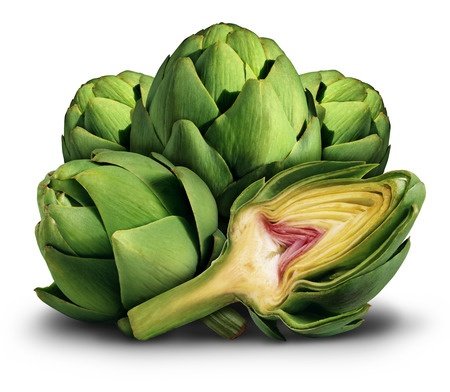The recommended daily dose contains:
- White pepper 240,000 mg
- Artichoke 240,000 mg
- Galangal 240,000 mg
- Aloe Vera (200:1 extract) 40,000 mg
White pepper
White pepper is obtained from fully ripe fruits of the pepper (Piper Nigrum). The outer shell and fleshy part of the pepper fruit is removed for this purpose. This is done by soaking the freshly picked fruit, preferably in slowly running water. Thus, the fleshy part is separated from the grains and can be removed mechanically. The beans are then dried and are known as white pepper. White pepper increases heat-generating processes in the body and increases absorption in the gastrointestinal tract.
|
Artichoke
The artichoke (Cynara scolymus) is a thorn-like, strong plant of the Asteraceae family. In 2003, the artichoke was chosen as the medicinal plant of the year. Artichokes are believed to have appetite enhancing, digestive and cholesterol lowering effects. Based on different mechanisms of action a) through increased cholesterol excretion, b) increased consumption in the synthesis of bile acids and c) inhibition of cholesterol formation in liver cells, it is believed that lowering of total cholesterol by up to 12% is possible through the artichoke. In this regard, artichoke has an important role in the prevention of atherosclerosis. The bitter substance Cynarin in the artichoke stimulates the metabolism of the liver and bile. Their leaves are eaten steamed, used for juices, teas, dry extracts and tinctures. Their medicinal and dietary effect is explained by the content of flavonoids and quinic acid derivatives.
|
Galangal
Galangal (Alpinia officinarum) is a commonly used medicinal plant and spice, a relative of ginger. In herbal medicine, the essential oil contained in the roots is used with gingerols, galangol, flavonoids and tannins. The ingredients stimulate digestion, have an antispasmodic, antibacterial and anti-inflammatory effect. Therefore, galangal is especially recommended for gastrointestinal disorders, such as flatulence and bloating, for discomfort with spasms in the gastrointestinal tract, and to improve blood circulation and oxygen supply to the muscles. New studies indicate that galangal has fungicidal and even anti-tumor effects.
|
Aloe Vera (200:1 extract)
Over 150 substances in aloe are known today, among them polysaccharides, vitamins, minerals and amino acids. One of the biggest surprises that aloe vera presented to science in the 20th century was acemannan, a polysaccharide that is produced in the human body until puberty. The mucopolysaccharide acemannan was first described in a series of studies in the 1980s. The American John C. Pitman published in 1992 in the journal Health Consciousness an article about the natural "antiviral, antibacterial and antifungal properties" of the long polysaccharide chain. Since then, the potential of acemannan, which is present not only in Aloe vera leaves but also in ginseng and astragalus roots, the reishi mushroom and in shark cartilage, has occupied research teams around the world. Added to this are the so-called amino sugars such as glucosamine, which are found in the human body in connective tissue, cartilage and synovial fluid. In addition, aloe contains various enzymes known to science for a long time as guarantors of powerful cellular protection and homeostasis, for example proteases, oxidases, amylases and catalases. Aloe vera is a super food that maintains its metabolism in its natural habitats under extreme conditions, it has a whole range of well-coordinated vital substances whose efficacy in the human body has been proven. The most important minerals are collected in the aloe vera cells in a particularly effective concentration ratio. This applies to macro elements - mainly calcium, potassium, magnesium, sodium and iron - as well as to the micro elements manganese, chromium, zinc and copper.
|




There are no reviews yet.